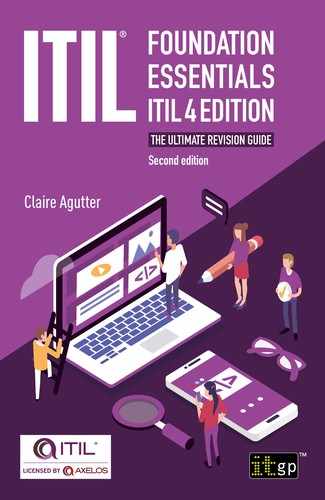CHAPTER 4: SERVICE RELATIONSHIPS
This chapter explains service relationships including:
•Service offerings
•Service relationship management
•Service provision
•Service consumption
Service offerings
“A service offering is a description of one or more services, designed to address the needs of a target consumer group. A service offering may include goods, access to resources, and service actions.”
The consumer groups that a service is offered to may be part of the same organisation as the service provider, or they might be external to the service provider. Service providers can offer the same product in different ways to different consumer groups; for example, short-term or long-term car leases, or leases with a right-to-buy at the end of the lease.
Service relationships
“A service relationship is a cooperation between a service provider and a service consumer. Service relationships include service provision, service consumption, and service relationship management.”
Figure 2 shows a generic representation of a service.
Figure 2: A generic representation of a service
The service relationship model
Figure 3 shows the service relationship model.2
Services delivered by Organization A create or modify resources within Organization B. Organization B can then use these resources to provide services to its own consumers. For example, laptop manufacturer B buys chips from Organization A so it can sell its laptops to Organization C, which gives them to its consultants.
This diagram shows a supply and consumption chain, but remember that for most organisations, supply and consumption is a more complex network of relationships.
Figure 3: The service relationship model
2 ITIL Foundation, ITIL 4 edition, figure 2.1.


